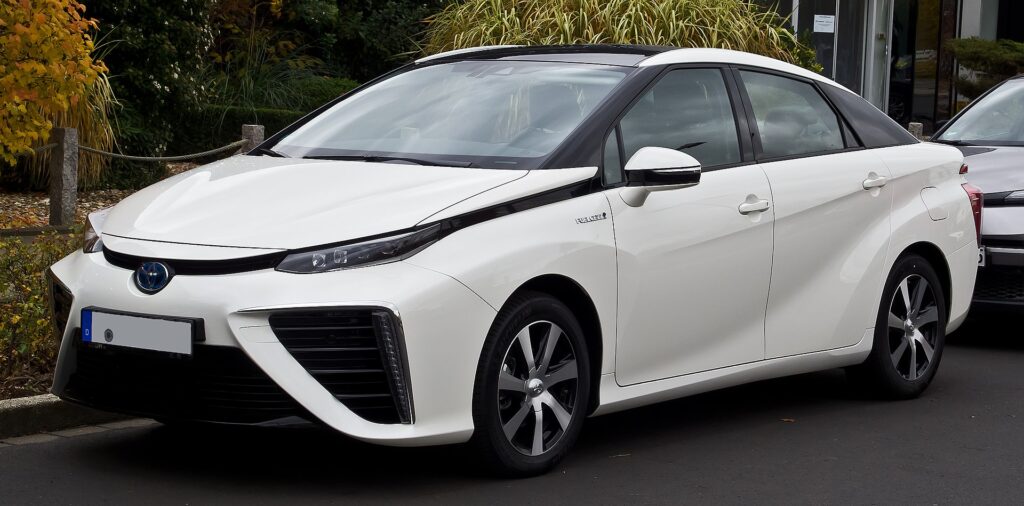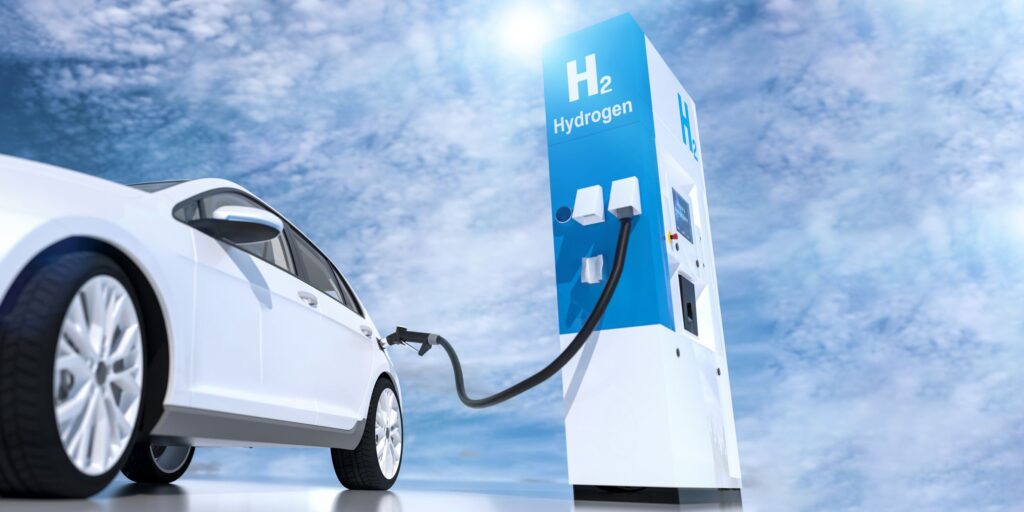The technologies that are being put forward to replace internal combustion engines are varied. The electrification of car fleets is underway, and this is one of the most popular options. However, it is not the only one available. Hydrogen cars also have a lot to say in this race to leave fossil fuels behind.
But what is the real status of this technology? In the following sections, we tell you about the pros and cons of hydrogen cars. We also tell you how they work and what implications they have for the environment.
Hydrogen Car: How the Fuel Works

Although we often make a distinction between electric and hydrogen cars, the similarities between the two are clear. Both need electricity to operate. The difference lies in the method they use to obtain the energy.
Electric cars recharge their batteries from external sources of electricity. However, the hydrogen car obtains energy by oxidizing hydrogen in a fuel cell. This process produces electricity, as well as water, which is conducted to the batteries. Finally, the engine draws electricity from the batteries.
To this process must be added another indispensable element: the hydrogen tank. Yes, this element brings the hydrogen car closer to the internal combustion car, because in both cases it is possible to store the fuel used to generate the necessary energy.
Advantages of the Hydrogen Car

With the pertinent review of the operation of a hydrogen car, it is time to review its advantages.
They are very Quiet
Because they run on an electric motor and do not require any internal combustion, these cars are quiet. In this sense, they have the same advantages as any other electric car.
Have Greater Autonomy
Although they are just as quiet, hydrogen cars have a longer range than electric cars. Since it is possible to store hydrogen in a tank, they can offer a range very similar to that of any conventional vehicle.
No Emission of Toxic Substances Into the Atmosphere
Another strong point of hydrogen is that its use as a fuel does not generate any harmful emissions. Therefore, we are talking about a completely environmentally friendly mobility option. However, that does not mean that they do not emit anything. Specifically, they release water vapor.
They Require Little Maintenance
As with electric cars, maintenance is low. It is limited to the usual passive and active safety elements of any other vehicle, such as tires, brakes and lights, and little else. They do not require large investments in the engine area.
Refueling is Similar to Combustion Cars
Something that worries those who buy an electric vehicle is the refueling time. The hydrogen option solves this problem. The time to refuel the tank of a hydrogen car does not exceed 3 or 4 minutes. Thus, the refueling time is similar to that of an internal combustion car running on gasoline or diesel.
Is A Commitment to Ecology with a Zero-emissions Label
The DGT awards the zero-emissions label to cars that opt for environmentally friendly technology. This is the case of hydrogen which, as we have already mentioned, does not emit any toxic substances into the atmosphere. Among the advantages of the Zero-label in some countries are free parking in central areas of the main cities, the elimination of tolls, and other tax discounts.
Disadvantages of Electric Cars

Unfortunately, all that glitters is not gold. Hydrogen-powered cars also have some clear disadvantages.
They are very Expensive
This is the main problem with hydrogen cars. They are still expensive because there is no competition and that keeps them out of most pockets. In time cheaper models may appear, but for the moment buying a car with these characteristics is a large investment for the consumer.
Few Gas Stations Offer Hydrogen
Another setback is that the supply of hydrogen in specialized establishments, such as gas stations, is still a minority. To give you an idea, in 2020 there were only six distribution points available in Spain. And in developed countries such as Germany, their goal is to reach 500 distribution points during this decade.
Have Less Space Because of the Components
The space required for the necessary components, such as the tank or the fuel cell, has direct consequences on the size of the vehicle. It is difficult to find small models that include this type of technology. In addition, the trunk is one of the spaces that suffer the most penalization because of the components.
There is little to choose from
At the moment, few brands offer cars that run on hydrogen. So when it comes to buying a model, the consumer is faced with a great shortage of proposals. If you want to start looking at some of the models currently available, here are some examples:
- Hyundai NEXO
- Toyota Mirai
- Honda Clarity Fuel Cell
- BMW i Hydrogen NEXT
- Hopium Machina
Have a Shorter Lifespan
Finally, another problem with hydrogen vehicles is that their useful life is shorter than that of combustion cars. For safety regulations, the useful life of a hydrogen tank is 15 years. The fuel cell, on the other hand, loses power with the passing of kilometers. A hydrogen car with 225,000 kilometers can lose up to 15% of its power.
This post may contain affiliate links, which means that I may receive a commission if you make a purchase using these links. As an Amazon Associate, I earn from qualifying purchases.

